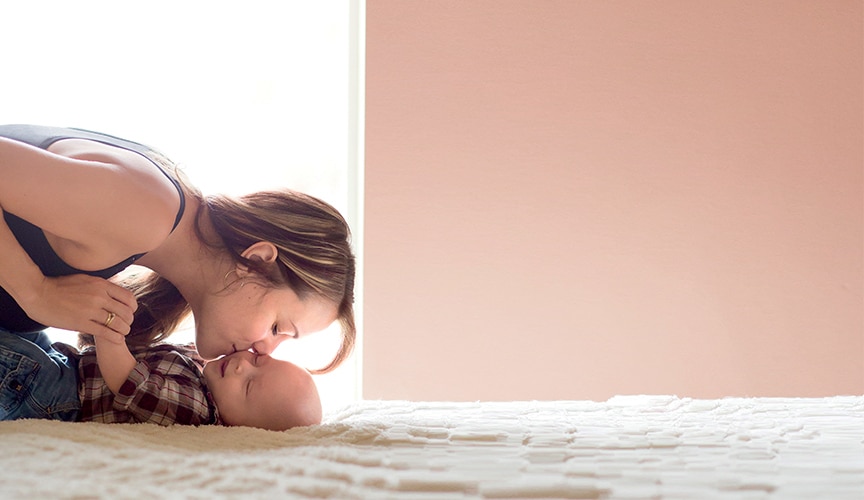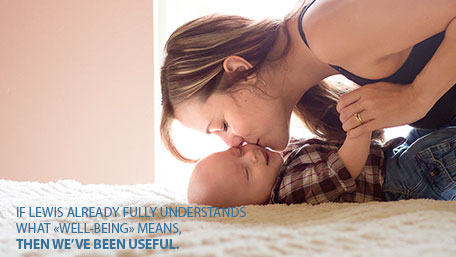An unknown origin
The exact origin of cradle cap is still unknown to this day. It is not clear why some children develop it and others do not. And, although it is sometimes referred to as cradle cap, nutrition and in particular breastfeeding (...) are not linked to the condition. Changing the type of milk or switching from breast milk to artificial milk will therefore have no impact on cradle cap. And, contrary to popular belief, cradle cap is not due to a lack of hygiene either. However, taking a few steps on a daily basis can make it easier to remove cradle cap and limit the extent or appearance of new crusts.
Formation mechanism of cradle cap
Even if we do not know the reasons for its appearance in young children, the mechanisms responsible for the appearance of cradle cap are well identified.
In the case of cradle cap, sebum is secreted in excess, so there is hyper-seborrhea on the surface of the skin.
This excess of sebum is partly due to the mother's hormones transmitted at the end of pregnancy.
An excess of sebum
Among the causes of cradle cap onset, excess sebum is the first. Sebum is an oily substance that is naturally found on the surface of our skin from a very young age. Its secretion is ensured by the sebaceous glands. These are an integral part of the hair root or hair, whether or not the hair has already grown. This therefore explains why cradle cap is mainly observed in areas that are rich in hair and consequently in sebaceous glands, also called oily areas.In the case of cradle cap, sebum is secreted in excess, so there is hyper-seborrhea on the surface of the skin.
This excess of sebum is partly due to the mother's hormones transmitted at the end of pregnancy.
Proliferation of a yeast
An environment rich in sebum promotes the proliferation of yeasts of the Malassezia genus. This is a family of yeasts naturally present on the surface of the skin. These yeasts, harmless in normal proportions, become pathogenic when they are present in large numbers. They cause a specific inflammatory reaction that results in redness and accelerated renewal of scalp and skin cells, leading to unusual desquamation (dead skin falling off) and scales (dead skin residue) forming on the skin surface.Cleansing measures for cradle cap
It is not yet known what causes cradle cap, but the good news is that in most cases it will clear up naturally over time. Whether a treatment is implemented or not, it is recommended to adopt certain simple cleansing measures on a daily basis to facilitate the elimination and prevent the appearance of cradle cap crusts.
Several possibilities are available to you:
- If you wish to act on your child's cradle cap, there are two approaches:
- Apply a specific product that takes care of the condition. Depending on your preference, there are several types of galenic textures such as cream, emulsion, gel, lotion or a fatty substance. These products should be applied before washing to help the crusts come off. After exposure time (of varying lengths depending on the product), the product should be rinsed with a cleansing care product or a gentle shampoo specifically designed for babies or indicated from a young age for a gentle wash. These cleansing care products will respect the pH of the newborn's skin and will not irritate it further.
- There are also shampoos that act on cradle cap and rinse in a classic way.
- If you want cradle cap to be eliminated over time, naturally, without the use of specific products, it is nonetheless advisable to wash your child's hair with a gentle, adapted shampoo so as not to irritate their scalp.
In both cases, your child's hair should be brushed daily. Be sure to use a special soft brush so as not to further irritate the scalp.


